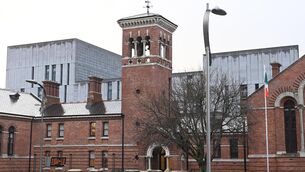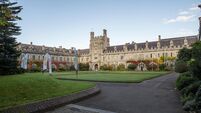Couples buck trend with marriage surge
A leading sociologist described the patterns as “puzzling” after the last decade saw a 40% surge in the number of marriages despite the increasing secularisation of society.
“There is a very strong move into marriage,” said Professor Tony Fahey.
“It’s partly driven by an increase in the population of people of marrying age but also by an increased propensity of people to marry.
“Parallel with that trend is an increase in the number of cohabiting couples, with the norm now being for couples to live together in their 20s and then get married in their 30s. Both forms of couple formation have increased. It’s not as if one is displacing the other.”
The findings are in a report, Families in Ireland, written by Prof Fahey and his UCD colleague, Catherine Anne Field.
They also found that, contrary to the experience in practically all other developed countries, Irish couples have been slow to take the divorce route.
“On the advent of divorce in 1996, there was no rush to divorce among already separated couples which is extraordinary because the universal history shows there is always a spike yet there was no spike in Ireland. This is quite puzzling and it’s not what was expected.”
Prof Fahey said Irish couples were more likely to apply for judicial separations.
“There seems to be some kind of reluctance by people even when marriage breaks down, even when they are separated, to get divorced.”
He said the spur for divorce seemed to be when the first child arrived in a second relationship but further research is now underway to try to understand the underlying factors that influenced such decisions.
Along with the economic boom of the past decade, there was also a baby boom and the number of births last year was 6% up on the previous year — a huge increase in any one year. Irish couples are also more likely to have three children when in many parts of Europe it is unusual to have even two.
“This is surprising because of the high costs of childcare and housing. The state of the economy and particularly the labour market may have a bigger influence on people than even the level of government support and childcare,” said Prof Fahey.
In fact, using one model of statistical calculation, he found that initiatives like increased parental leave and better maternity pay have a negligible impact on birth rates compared to a buoyant jobs market and increased work opportunities for women.
While family size has changed over the decades, so too has their relative economic fortunes. In the past, the family most at risk of poverty comprised two parents and seven, eight or more children.
“The successor to that today is the one-child family with a lone parent,” said Prof Fahey.
Changing family sizes between 1981 and 2006
Lone children up 77.4%
Two-children families up 33.1%
Three-children families down 19.9%
Four-children families down 58.5%
Five-children families down 79.1%
Six or more children down 89.8%
There was 40% more marriages in 2006 than in 1995. By 2005, the average age of marriage was 33.1 years for men and 31 years for women.
In 1960, the average age of women giving birth was 31.6 years and in 2004, it was 30.8 years.













